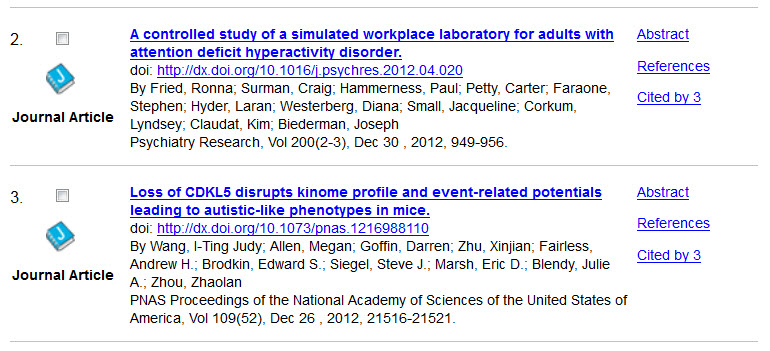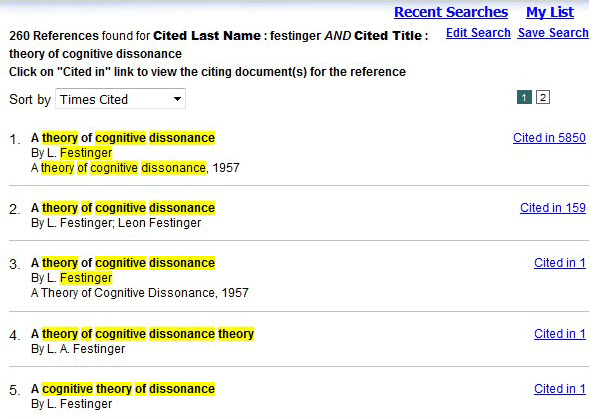Welcome to “From the Deck of . . .” an irregular series in which we highlight search demos and other information from the slide decks we create for our live training sessions. You can view and download these materials from our SlideShare account.
We recently presented our Lunch & Learn training session at the American Library Association Annual Conference & Exhibition. One of the items we covered in this session was a review of working with cited references in PsycINFO® on all of the major vendor platforms: APA PsycNET®, EBSCOhost, Ovid, and ProQuest.
Being able to successfully navigate cited references data allows you to identify where a particular piece of research fits into the larger research continuum. You can see what led to that research, and how it influenced the research that followed. It’s also a great way to help a student who’s brainstorming dissertation topics, or a researcher looking for a new area to explore.
Cited references are the bibliography of an article, which is included in the PsycINFO record.
In addition to being displayed on the record for the article that they came from, the cited references are used to power our “cited by” feature, which allows you to locate an article, and find out where that article has been cited.

Search results on APA PsycNET. The “References” link will display the bibliography for the article. The “Cited by” link will display a list of other articles that have cited this one.
While this is an extraordinary tool, it’s important to understand the limitations. There are three main points, which we will cover briefly here.
First, not all items in PsycINFO include the cited references: APA has only been adding them since 2002. Currently, about 2 million of the more than 4 million items in PsycINFO include cited references.
Items that you will see cited references for:
- Records added in 2002 or later
- Older issues of selected APA journals – for many of our journals, we back-filled the references, in some cases going as far back as 1960
- Records from journals whose complete runs were added to PsycINFO after 2002
Items that cited references are missing from:
- Articles added prior to 2002
- Articles without reference lists
- Suggested reading lists
- Articles with multiple comments and a shared reference list
- Articles with poor scan quality
- References written in non-Roman character sets
Second, there are often multiple variations of the same citation, which are not matched or collapsed together.

There are more than 250 search results for a Cited References search for items that have Festigner as Author and “Theory of Cognitive Dissonance” in the Title.
This occurs because authors are using different citation formats, and because sometimes there are errors in citations. APA’s indexing policy for PsycINFO is that the record for an item should reflect the information as it was presented in the original article. This means that we do not revise or correct bibliographies.
Third, each platform that PsycINFO is on handles cited reference searching differently. APA provides each of our partners with the same data files, but how they analyze and search references, and how they report results is proprietary to each platform. This means that you need to know how the platform you use treats cited references.
For a detailed breakdown of how the PsycINFO cited references are handled on APA PsycNET, EBSCOhost, Ovid, and ProQuest, please refer to the slides from our Lunch & Learn at ALA Annual 2016. This section starts with slide 35, and we recommend that you download the slides and view them in PowerPoint – much of the information is included in the Presenter Notes field.
The presentation included two other search demos: A review of PsycTHERAPY®, and a brief overview of APA Style CENTRAL®.

